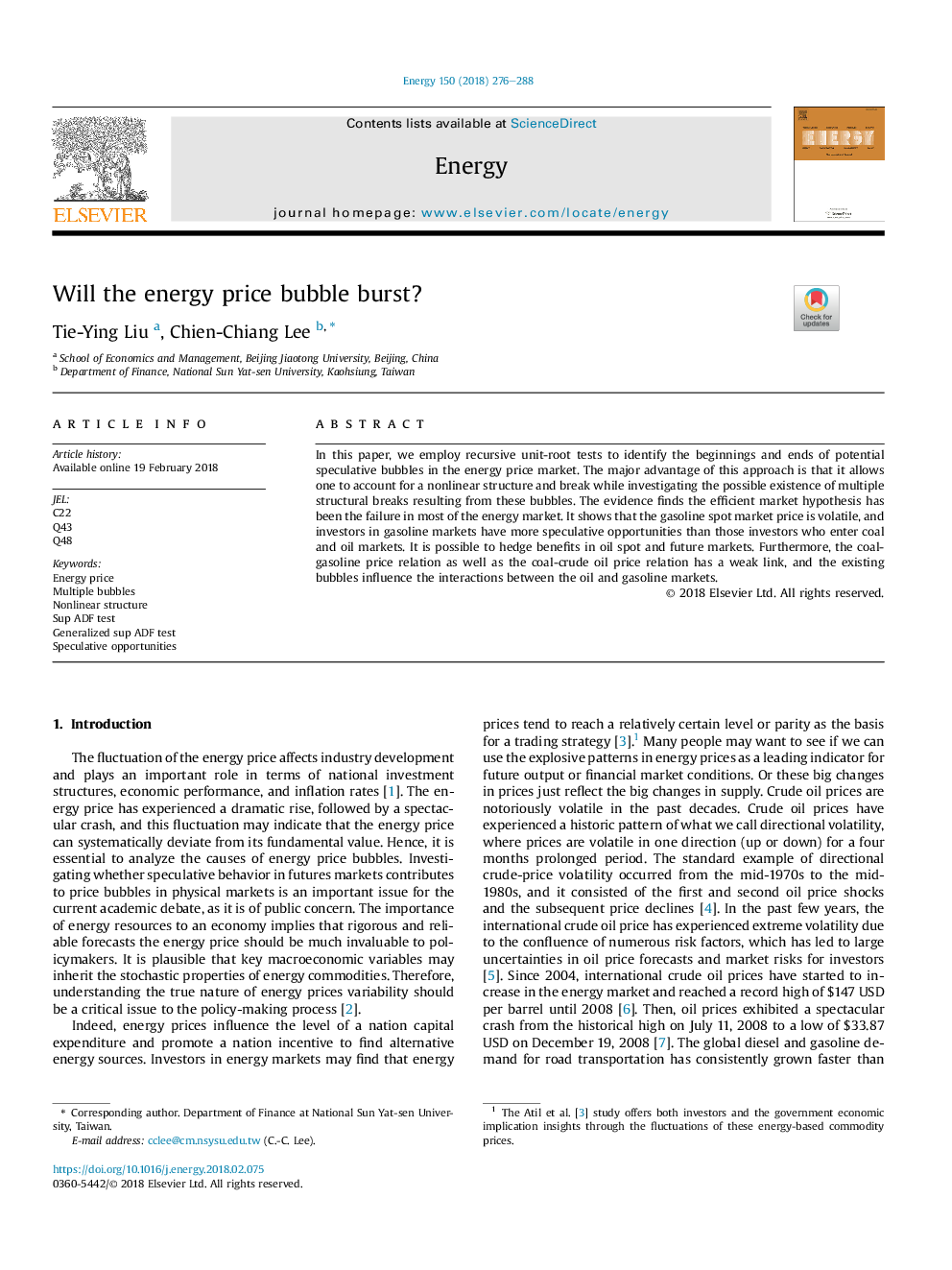ترجمه فارسی عنوان مقاله
آیا حباب قیمت انرژی پاره خواهد شد؟
عنوان انگلیسی
Will the energy price bubble burst?
| کد مقاله | سال انتشار | تعداد صفحات مقاله انگلیسی |
|---|---|---|
| 94458 | 2018 | 13 صفحه PDF |
منبع

Publisher : Elsevier - Science Direct (الزویر - ساینس دایرکت)
Journal : Energy, Volume 150, 1 May 2018, Pages 276-288
ترجمه چکیده
در این مقاله، ما از آزمونهای مجدد ریشه واحد استفاده می کنیم تا ابتدا و انتهای حباب های احتمالی احتمالی در بازار قیمت انرژی را شناسایی کنیم. مزیت عمده این رویکرد این است که آن را اجازه می دهد تا یک حساب برای ساختار غیر خطی و شکستن در حالی که تحقیق ممکن است وجود چند شکست ساختاری ناشی از این حباب. شواهد نشان می دهد که فرضیه بازار کارایی شکست در بسیاری از بازار انرژی است. این نشان می دهد که قیمت بازار بنزین نقطه پایدار است و سرمایه گذاران در بازار بنزین فرصت های احتمالی بیشتری نسبت به سرمایه گذاران وارد بازار نفت و زغال سنگ می کنند. ممکن است منافع را در نقاط نفت و بازارهای آینده حفظ کنید. علاوه بر این، قیمت قیمت زغال سنگ-بنزین و همچنین قیمت نفت زغال سنگ، دارای پیوند ضعیف است و حباب های موجود بر روی تعاملات بین بازار نفت و بنزین اثر می گذارند.

